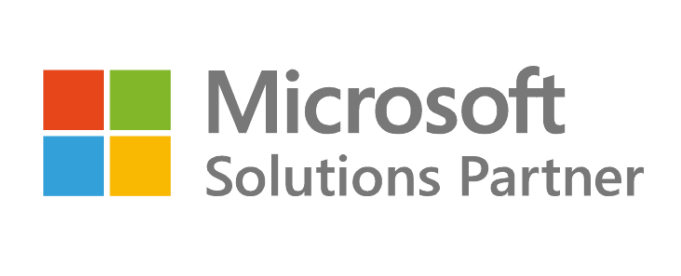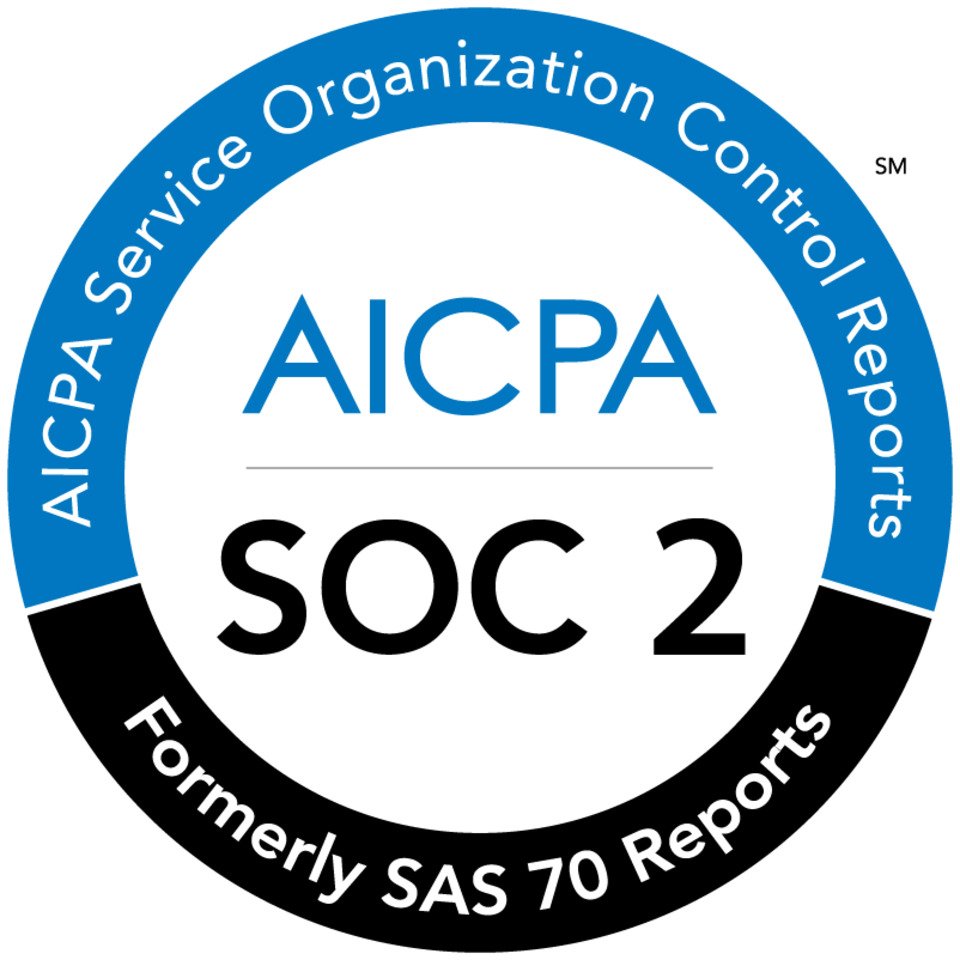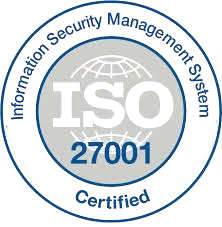Automation of Financial Processes with AI + RPA
We partner with industry leaders



Industries That Benefit
Problems or Missed Opportunities We Solve
Excessive Manual Processing
Financial operations teams spend 50-70% of their time on repetitive tasks that add minimal value yet consume substantial resources. These manual processes create organizational bottlenecks while wasting specialized talent.
Our approach:
- Automates 80-90% of routine financial processes
- Eliminates manual data entry and manipulation
- Handles both standard and exception cases
- Frees financial professionals for higher-value activities
Persistent Error Rates
Manual financial processes typically experience 2-5% error rates despite careful execution, creating downstream impacts, reconciliation burdens, and control weaknesses. These errors damage both operational efficiency and financial accuracy.
Intelligent automation delivers:
- Near-perfect accuracy in routine processing
- Elimination of manual calculation errors
- Consistent application of financial rules
- Automatic validation before process completion
Processing Delays and Bottlenecks
Critical financial processes frequently face delays due to manual steps, staff availability, and workload spikes. These bottlenecks impact downstream activities, delay financial closing, and create compliance risks.
The solution provides:
- 24/7 processing without staffing limitations
- Consistent throughput during peak volume periods
- Elimination of handoff delays between processes
- Dramatic acceleration of end-to-end processing timelines
Control Weaknesses and Audit Issues
Manual financial processes create control challenges including segregation limitations, inconsistent execution, and incomplete documentation. These weaknesses frequently generate audit findings and regulatory concerns.
Advanced automation ensures:
- Consistent control execution across all transactions
- Complete documentation of all process steps
- Proper segregation of duties through role-based automation
- Comprehensive evidence for audit and examination purposes
Scaling Limitations
Financial organizations struggle to scale operations efficiently, with headcount traditionally growing in direct proportion to transaction volume. This limitation constrains growth and geographic expansion while increasing operational costs.
Automation enables:
- Processing scale independent of staffing levels
- Consistent operations across different regions
- Support for transaction growth without proportional cost increases
- Rapid adaptation to new products and business models
Case Study
Real Results from Financial Leaders
KYC Automation for a German Payments Fintech
A mid-sized German payment gateway with 180 employees processing approximately €700-800M in annual transactions, active in 6 EU markets.
- 28% conversion increased
- 40% improved performance
Conversational AI for a Spanish Insurance Firm
A traditional Spanish insurance provider with 85 years of history, 950 employees, and €280 million in annual premiums across home, auto, life, and commercial lines.
- 28% conversion increased
- 40% improved performance
Real-Time Fraud Detection in UK Digital Payments App
A fast-growing UK-based mobile payment application with 165 employees processing approximately £1.3 billion in annual transaction volume with around 700k active users.
- 28% conversion increased
- 40% improved performance
AI Copilot for Treasury Operations at a Spanish Payment Orchestration Platform
A mid-sized German payment gateway with 180 employees processing approximately €700-800M in annual transactions, active in 6 EU markets.
- 28% conversion increased
- 40% improved performance
Certifications & Compliance



Benefits of Using the Solution

Dramatic Cost Efficiency
Reduce operational expenses by 50-70% through intelligent automation of routine financial processes. Organizations typically eliminate thousands of manual hours monthly while maintaining or improving accuracy and control, directly enhancing operational profitability.

Enhanced Accuracy and Control
Virtually eliminate errors in financial processes through consistent automated execution and multi-level validation. Financial operations achieve error rates below 0.1% while strengthening controls and compliance, reducing both financial and regulatory risks.

Accelerated Processing Cycles
Compress days-long processes into minutes or hours through continuous automated execution without manual bottlenecks. Month-end closing typically accelerates by 40-60%, providing faster financial insight while reducing period-end pressure.

Improved Scalability
Handle growing transaction volumes and business complexity without proportional staffing increases or operational strain. Organizations can support 2-3x volume growth with existing teams while maintaining quality and timeliness, creating substantial operational leverage.

Strategic Resource Reallocation
Redirect financial talent from repetitive tasks to strategic analysis, business partnering, and value-added activities. Finance professionals typically shift 60-70% of their capacity from mechanical processing to higher-value contributions that impact business results.
Process Flow

Process Assessment & Opportunity Analysis
The engagement begins with detailed examination of your current financial processes, systems landscape, and operational challenges. This assessment identifies high-value automation opportunities, potential challenges, and implementation priorities based on business impact.
Solution Design & Process Optimization
Process and technology specialists develop optimized workflows combining robotic process automation for structured tasks and AI capabilities for judgment-intensive activities. This design phase creates efficient end-to-end processes rather than simply automating existing inefficiencies.
Technology Configuration & Integration
Technical specialists configure automation components and establish secure connections with your financial systems, databases, and repositories. This development phase creates the technological foundation for seamless process execution without manual intervention.
Testing & Control Validation
Rigorous testing verifies accuracy, reliability, and control effectiveness across all automated processes and potential scenarios. This validation ensures both operational reliability and compliance with financial control requirements before deployment.
Phased Implementation & Knowledge Transfer
The solution deploys through a controlled rollout approach, starting with specific processes and expanding across the organization. Operational teams receive comprehensive training on monitoring automated processes, handling exceptions, and optimizing outcomes.
Continuous Improvement & Expansion
Automated processes undergo regular review to identify enhancement opportunities, expand capabilities, and incorporate additional financial activities. This ongoing optimization ensures sustained performance improvements and expanding automation coverage.
Why Aspagnul Is the Ideal Partner
Financial Process Specialization
The Aspagnul team combines deep expertise in financial operations, accounting standards, and regulatory requirements with advanced automation capabilities. This specialized knowledge ensures our solutions address the unique characteristics of financial processes rather than applying generic automation approaches.
Our financial specialists have implemented automation across major global banking, investment, and insurance operations, creating systems that handle complex financial activities with exceptional reliability and control.
Integrated RPA + AI Approach
Our automation platform seamlessly combines traditional robotic process automation for rule-based activities with sophisticated AI capabilities for judgment-intensive tasks. This integrated approach enables end-to-end process automation rather than the partial solutions delivered by standalone RPA tools.
The technology handles both structured and unstructured information, applies financial rules consistently, learns from exceptions, and continuously improves performance—creating truly intelligent financial process automation.
Enterprise-Grade Security & Control
Our platform is built specifically for the stringent security and control requirements of financial operations. The infrastructure maintains comprehensive audit trails, enforces segregation of duties, and documents all automated activities with the evidence required for financial audits and regulatory examinations.
This purpose-built architecture provides the control documentation and security that financial processes demand, validated through successful regulatory examinations and financial audits.
Seamless System Integration
The solution connects with your existing financial systems, ERP platforms, and proprietary applications through multiple secure integration methods. This connectivity enables automated processes to operate across your entire systems landscape without requiring application changes or replacement.
The platform has established connections with major financial systems, enabling rapid implementation without extensive technical modifications or disruption to existing operations.
Proven Financial Implementation Experience
Our financial automation solutions have been implemented at over 150 financial institutions globally, processing millions of transactions daily with exceptional reliability and control. This implementation experience ensures smooth deployment in complex financial environments with diverse system landscapes.
Frequently Asked Questions
Financial AI systems fail for reasons fundamentally different from general machine learning applications, requiring specialized diagnostic approaches. Our assessment methodology systematically evaluates five critical dimensions often overlooked by conventional reviews: data quality degradation specific to financial processes, model architecture alignment with financial problem structures, implementation constraints in regulated environments, governance gaps creating operational limitations, and monitoring effectiveness for financial patterns.
The diagnostic process combines quantitative performance metrics, code review, data assessment, implementation analysis, and governance evaluation to identify precise causes rather than symptoms. This comprehensive approach typically identifies specific remediation opportunities that recover 85-95% of expected performance without complete rebuilds. Financial institutions gain clear understanding of exactly why systems underperform and what specific actions will restore value, rather than vague recommendations requiring substantial reinvestment.
Conventional approaches to bias remediation often create unacceptable performance degradation, forcing financial institutions to choose between fairness and effectiveness. Our methodology implements a more sophisticated approach: multi-dimensional fairness assessment identifying specific bias mechanisms rather than just outcome disparities, targeted interventions addressing underlying causes rather than symptoms, balanced remediation preserving legitimate risk signals while removing discriminatory patterns, and comprehensive documentation establishing regulatory defensibility.
This balanced approach typically achieves 30-50% reduction in demographic disparities while maintaining or improving overall model performance—eliminating the common fairness-performance tradeoff. Financial institutions receive both the fairness improvements needed for regulatory compliance and the performance characteristics required for business effectiveness. The solution includes comprehensive documentation specifically designed to satisfy fair lending examinations and regulatory reviews.
Financial AI systems frequently face four categories of regulatory compliance gaps: insufficient model documentation failing to satisfy SR 11-7 and similar requirements, inadequate explainability for consumer-facing and credit decisions, incomplete fairness testing across protected classes, and governance deficiencies around validation and ongoing monitoring. These gaps create significant regulatory exposure during examinations and reviews.
Our remediation methodology directly addresses these compliance dimensions through targeted enhancements: comprehensive model documentation meeting regulatory standards, appropriate explainability implementations based on use case risk, thorough fairness testing with documented remediation, and governance framework implementation satisfying examiner expectations. Financial institutions receive complete compliance packages specifically designed for their regulatory context and model use cases, substantially reducing examination findings and restrictions.
Model drift represents one of the most common yet frequently misdiagnosed issues in financial AI, requiring sophisticated detection and targeted remediation. Our approach differentiates between four distinct drift patterns often confused in conventional analysis: data drift affecting input distributions, concept drift changing underlying relationships, operational drift from implementation changes, and population drift affecting applicability to current segments.
This precise diagnosis enables targeted remediation rather than unnecessary complete retraining: data drift typically requires recalibration or partial retraining rather than full rebuilds; concept drift necessitates feature engineering and selective retraining; operational drift requires implementation adjustments rather than model changes; population drift needs segmentation refinement and targeted enhancement. Financial institutions receive precisely targeted remediation that addresses actual drift patterns rather than generic retraining recommendations, delivering faster and more sustainable performance restoration.
Our implementation approach minimizes demands on your resources while ensuring effective knowledge transfer for long-term sustainability. The typical optimization process requires limited involvement from your team—usually 3-5 hours weekly from model owners and 2-3 hours weekly from IT stakeholders during the active remediation phase.
The collaborative methodology provides appropriate knowledge transfer to your internal teams without creating significant additional work. Technical specialists gain practical understanding of remediation approaches while governance teams receive comprehensive documentation of changes and ongoing requirements. Most financial institutions complete full optimization within 8-12 weeks with minimal disruption to ongoing operations, achieving substantial performance and compliance improvements while developing internal capabilities for long-term AI success.
Financial institutions typically experience improvements in three primary dimensions: performance metrics (30-50% improvement in model accuracy, precision, or business KPIs), compliance positioning (85-95% reduction in potential regulatory findings), and operational stability (65-75% decrease in model incidents and unexpected behaviors). These improvements begin appearing within 4-6 weeks of engagement start, with full implementation typically completed within 8-12 weeks.
The specific improvements depend on your current model state, application type, and business objectives. Remediation priorities are established based on business impact, with performance enhancements and critical compliance gaps addressed first. Most financial institutions achieve full ROI within the first quarter following optimization through combined benefits of improved business outcomes, reduced operational issues, and avoided regulatory findings. We establish baseline measurements during initial assessment and track improvements against these metrics to provide clear value documentation.
Get in touch
We’re excited to hear from you and to start something special together.
- Money-back guarantee if you don’t receive what we promise.
- Full financial and technical analysis of your current situation.
- Full support from the moment of our first contact.
Contact Information

Turn your financial operations with purpose-built AI solutions from Aspagnul that reduce costs, accelerate growth, and ensure regulatory compliance across financial institutions.
